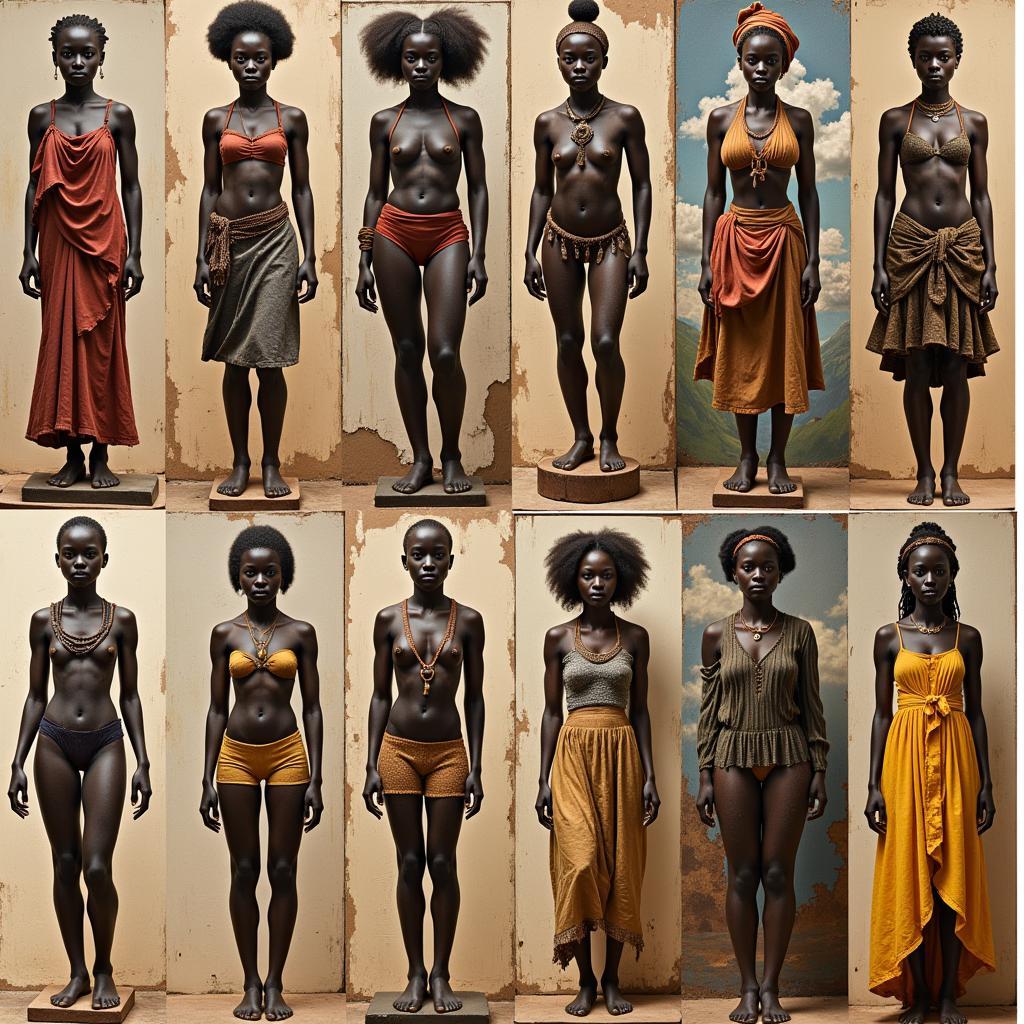Unveiling Creativity: The World of African Ceramic Artists
African Ceramic Artists have been shaping and molding clay for centuries, transforming this humble material into objects of both utility and profound artistry. Their creations, often imbued with cultural significance and symbolic meaning, offer a fascinating glimpse into the diverse artistic traditions found across the African continent. From intricate pottery to vibrant tile work, the legacy of African ceramic artists continues to captivate and inspire.
A Legacy Etched in Clay: The History of African Ceramics
The history of African ceramics is deeply intertwined with the development of civilizations across the continent. Archaeological discoveries reveal that pottery making in Africa dates back thousands of years, with some of the earliest examples found in regions like the Sahara Desert and the Nile Valley. These early ceramics served practical purposes, used for storing grain, cooking food, and transporting water.
Over time, however, African ceramic art transcended its utilitarian origins. Artists began to experiment with different techniques, incorporating decorative elements and symbolic motifs into their work. The use of clay became a powerful medium for storytelling, with pottery and other ceramic objects reflecting cultural beliefs, societal structures, and spiritual practices.
Beyond Function: Exploring Styles and Symbolism
African ceramic art is characterized by a remarkable diversity of styles, reflecting the vast cultural landscape of the continent. Each region and ethnic group has developed its own unique traditions and techniques, passed down through generations of artisans.
In West Africa, the Yoruba people of Nigeria are renowned for their intricately decorated pottery, often featuring elaborate figurative sculptures and complex geometric patterns. The use of indigo dyes, derived from plants, creates a striking contrast against the earthy tones of the clay.
Moving to East Africa, the ceramic traditions of Tanzania are equally captivating. The Makonde people are known for their mastery of figurative sculpture, crafting expressive ceramic figures that depict ancestors, spirits, and scenes from daily life. The use of burnishing techniques creates a smooth, polished finish, enhancing the beauty of the forms.
More Than Just Pots: The Diverse Creations of African Ceramic Artists
While pottery remains a cornerstone of African ceramic art, the creative talents of these artists extend far beyond the realm of functional vessels. From architectural elements to ceremonial objects, ceramics play a significant role in various aspects of African Life.
- Tiles and Mosaics: Intricately designed ceramic tiles are a common feature in many African architectural styles. From the vibrant zellige mosaics of Morocco to the geometric patterns found in Tunisian courtyards, these ceramic creations add a touch of artistry and cultural identity to buildings.
- Masks and Sculptures: Ceramics are also used to create stunning masks and sculptures, often employed in traditional ceremonies, rituals, and performances. These pieces frequently embody spiritual significance, representing deities, ancestors, or mythical creatures.
- Beads and Jewelry: The versatility of clay extends to the creation of beads and jewelry. African ceramic artists craft beautiful and intricate pieces, often incorporating vibrant glazes and decorative elements that reflect cultural motifs and personal adornment traditions.
Modern Expressions: African Ceramic Artists in the Contemporary Art World
In recent decades, there has been growing global recognition and appreciation for African contemporary art, including the captivating works of ceramic artists. These artists continue to push boundaries, exploring new forms, techniques, and concepts while drawing inspiration from their rich cultural heritage.
Many contemporary African ceramic artists are gaining international acclaim for their innovative approaches to the medium. Their works can be found in prestigious galleries and museums worldwide, showcasing the vibrancy and dynamism of African art in the 21st century.
Continuing the Legacy: Supporting African Ceramic Artists
As we delve into the fascinating world of African ceramic artists, it’s essential to acknowledge the importance of supporting their work and ensuring the continuation of these rich artistic traditions. By purchasing authentic African ceramics, we not only acquire beautiful and meaningful objects but also contribute to the livelihoods of talented artisans and their communities.
Furthermore, seeking out opportunities to learn more about African ceramic art, whether through museum exhibitions, cultural centers, or online resources, helps to foster a deeper appreciation for these diverse artistic expressions. By celebrating the creativity and craftsmanship of African ceramic artists, we contribute to the preservation of their legacy for generations to come.
FAQs: Exploring the World of African Ceramic Artists
What are some common techniques used by African ceramic artists?
African ceramic artists employ a variety of techniques, including hand-building methods like coiling and pinching, as well as the use of pottery wheels. Decorative techniques include carving, stamping, burnishing, and the application of slips and glazes.
Where can I find authentic African ceramics?
Authentic African ceramics can be found in a variety of places, including fair trade shops, African art galleries, and online marketplaces specializing in ethical sourcing. It’s important to purchase from reputable sources that support fair labor practices and sustainable sourcing.
How can I learn more about African ceramic artists and their work?
Many museums and cultural centers host exhibitions featuring African art, including ceramics. Additionally, online resources, such as art publications and virtual galleries, provide valuable insights into the world of African ceramic artists.
Explore More About African Art and Culture
Interested in delving deeper into the vibrant world of African art and culture? Check out these related articles:
- African ceramics
- African curios near me
- African craft market of rosebank
- African home accessories
- African art designs
We encourage you to continue your exploration of African art and discover the captivating creations of these talented ceramic artists.
Need assistance? Contact us:
Phone Number: +255768904061
Email: [email protected]
Address: Mbarali DC Mawindi, Kangaga, Tanzania
Our dedicated customer support team is available 24/7 to assist you with any inquiries.


